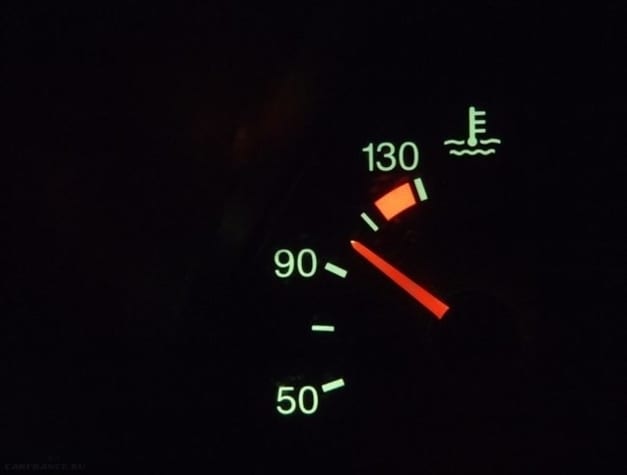
Normal engine operating temperature and why it rises
Content
- What is meant by the operating temperature of the engine
- What is normal engine temperature?
- Why it is important to know the operating temperature of the engine
- How to check engine temperature
- How do modern cooling systems work?
- What influences the choice of engine operating temperature when designing a car
- Influence of the type of internal combustion engine on the operating temperature of the engine
- What is "standard overheating"
- What is the danger of high engine temperature
- Causes of engine overheating
- Reasons for low engine temperature
- The main types of ICE cooling systems
- Influence of the type of internal combustion engine on its operating temperature
- Optimum operating temperature for injection, carburetor and diesel engines
- Consequences of overheating and hypothermia of the internal combustion engine
- How to restore the normal temperature of the internal combustion engine
- At what engine temperature should you start driving
- If the engine does not warm up to operating temperature
- What rules should be followed
- Normal engine temperature in winter
- Warming up the internal combustion engine
- Engine insulation
- Freezing of the engine
- Related videos
- Engine temperature - Questions and answers:
Maintaining the normal operating temperature of the engine is an important task of the cooling system. That is why we must find out what is the normal operating temperature of the engine, and what are the pitfalls in this matter. The mixture formation, fuel consumption, power and throttle response of the engine depend on the temperature of the coolant. Overheating of the engine promises serious problems, up to the failure of the entire unit. Learn how to avoid this below.
Engine operating temperature is the temperature in the engine cooling system.
What is meant by the operating temperature of the engine
This parameter does not mean the temperature inside the cylinders, but in the engine cooling system. In a running engine, due to the combustion of the air-fuel mixture, the temperature in the cylinders can exceed a threshold of a thousand degrees.
But more important for the driver is the heating parameter of the antifreeze in the cooling system. This parameter can be used to determine when the engine can be loaded or turned on the stove.
Maintaining the optimum temperature of the coolant in the system ensures greater engine efficiency, high-quality combustion of the VTS and minimal environmental pollution due to a smaller number of unburned fuel particles (the presence of an adsorber, catalyst and other systems affects the last parameter).
Normal engine temperature internal combustion during operation should be between 87 and 103 degrees Celsius (or in the range of 195 to 220 degrees Fahrenheit). For each specific type of engine, its own optimum temperature is calculated at which it operates most comfortably.
The power plants of modern machines operate at 100-105 degrees. In the engine cylinders, when the working mixture is ignited, the combustion chamber is heated up to 2500 degrees. The task of the coolant is to maintain and maintain the optimum temperature so that it does not go beyond the norm.
What is normal engine temperature?
It is believed that the normal operating temperature of the internal combustion engine is from 87 ° to 105 °. For each engine, the operating temperature is determined by its own, at which it operates most stably. The power units of modern cars operate at a temperature of 100 ° -105 °. In the engine cylinders, when the working mixture is ignited, the combustion chamber heats up to 2500 degrees, and the task of the coolant is to maintain the optimum temperature value that does not go beyond the norms.
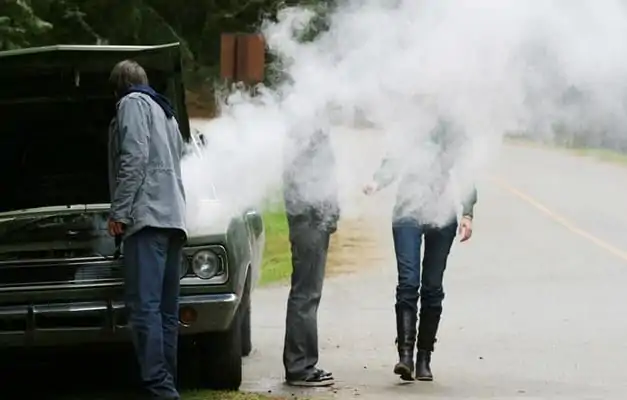
Why it is important to know the operating temperature of the engine
Each type of power unit has its own operating temperature, but regardless of this, any motor can overheat. The reason is that a mixture of fuel and air is burned inside the internal combustion engine cylinders, and this often raises the temperature in it to +1000 degrees and above.
This energy is needed to move the piston in the cylinder from top dead center to bottom dead center. The appearance of such energy without the formation of heat is impossible. For example, when a piston in a diesel internal combustion engine compresses air, it independently heats up to the combustion temperature of diesel fuel.
As everyone knows, when heated, metals have the property of expanding and deforming under critical loads (high temperature + mechanical stress). To prevent engines from reaching such a critical level in heating, manufacturers equip power units with various kinds of cooling systems to maintain an optimal temperature or to warn the driver of a possible malfunction.
How to check engine temperature
To simplify this procedure, a temperature gauge is displayed on the dashboard. This is a small arrow with a graduated scale, which indicates the critical threshold for heating antifreeze in the cooling system.
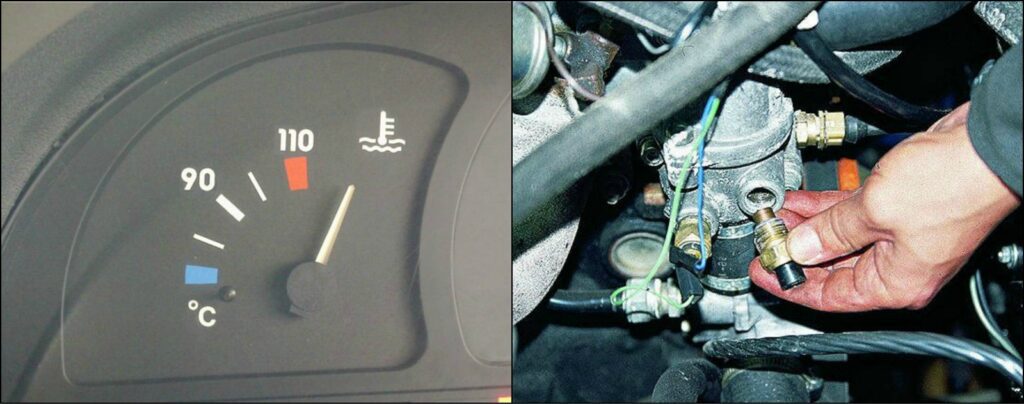
This indicator transmits the readings of the sensor installed in the engine cooling jacket. If this sensor is defective, an electronic temperature tester can be attached to it. The device will show the real temperature in the cooling system after a couple of minutes.
How do modern cooling systems work?
The device of modern cooling systems is much more complicated than in domestic cars, so they are more likely to eliminate the risk of overheating of the internal combustion engine. They can have two fans operating in different modes of blowing the cooling radiator. The control of these modes is already assigned not to the thermal switch, but to the electronic control unit.
Unlike a classic thermostat, which opens a large circle of circulation and automatically closes a small circle, in modern cars a thermostat with adjustments can be installed due to the presence of an additional heating element. Such an element, for example, will delay the opening of the thermostat later if the machine is running in severe frost or open it later in the heat so that the motor reaches a higher temperature longer.
Some modern models do not have a thermostat at all. Instead, electronic valves are installed. There are also vehicles with movable grille cells, for example in some BMW or DS models. In addition to improving aerodynamics, such elements prevent overcooling of the engine or accelerate its warming up in severe frosts.
Another major improvement in modern cooling systems is the installation of an electric water pump instead of the classic mechanical pump that only runs while the engine is running. The electric pump continues to circulate even after the engine has stopped. This is necessary so that after stopping the internal combustion engine, the coolant in the engine cooling jacket does not boil.
Features of cooling systems and their effect on temperature conditions
Vehicles equipped with an internal combustion engine may use one of the following cooling systems:
- Air natural type. You will not find such a system on cars today. It can be used on some motorcycle models. The system consists of additional ribs located on the motor housing. they act as a heat exchanger.
- Air forced type. In fact, this is the same air system, only its efficiency is higher due to the use of an electric fan. Thanks to its operation, the motor will not overheat, even when the vehicle is stationary. It is sometimes found on some car models.
- Open liquid. In land transport, such a system is not used because of the need to constantly replenish the lack of coolant. Basically, an open liquid cooling system is used in water transport.
- Liquid closed type. Most modern cars and many motorcycle models are equipped with such a cooling system.
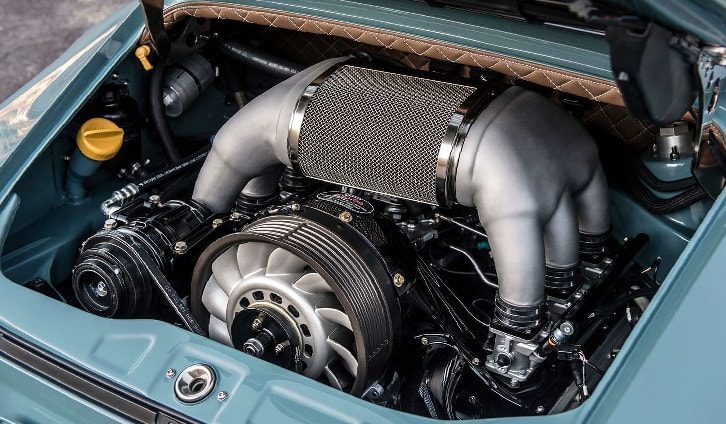
The most efficient cooling and gentle heating of the power unit is provided by a closed-type liquid system. The liquid in it boils at a higher temperature due to the pressure that is created inside the line.
What influences the choice of engine operating temperature when designing a car
Any motorist expects maximum efficiency from the engine of his car. The French engineer Sadi Carnot, who lived from 1796 to 1832, conducted research in the field of thermodynamics and concluded that the efficiency of an internal combustion engine is directly proportional to its temperature.
Only if its temperature is infinitely increased, its parts will sooner or later become unusable due to deformation. Based on this parameter, engineers, when designing new power units, calculate to what extent it is permissible to increase the temperature of the unit so that it has maximum efficiency, but at the same time it is not subjected to excessive thermal stress.
With increasing environmental requirements in cars, engines with a higher operating temperature are increasingly appearing. In order to increase the efficiency of the internal combustion engine and provide it with acceptable environmental friendliness, manufacturers were forced to increase the operating temperature of the motors.
This goal can be achieved in two ways:
- If you change the chemical composition of the coolant so that it does not boil at a higher temperature;
- If you increase the pressure in the cooling system.
With the combination of these two methods, it will be possible to create an almost ideal efficiency for the power unit without critical consequences. Thanks to this, some manufacturers managed to increase the operating temperature of the units to more than 100 degrees.
Influence of the type of internal combustion engine on the operating temperature of the engine
- Air cooled engines. Such engines have the highest engine operating temperature. This is primarily due to the low efficiency of air cooling. The temperature of the radiator can reach 200 degrees Celsius. If effective cooling is not available, such as during urban driving, these engines may overheat.
- Engines with open water cooling system designed for not very high operating temperatures. Cold water is supplied to the cooling system from the water area. After heating, it comes back.
- Diesel engines. A feature of such engines is that for normal operation they require high compression in the cylinders, which leads to self-ignition of the working mixture. That is why large heatsinks are required to maintain the operating temperature. It is normal for diesel engine operating temperature to reach over 100 degrees Celsius.
- Gasoline engines. Carburetor-type internal combustion engines, which are now practically no longer produced, had an operating temperature of 85 to 97 degrees Celsius. Injection engine models are available with operating temperature characteristics from 95 to 114 degrees. In this case, the pressure in the cooling system can reach 3 atmospheres.
What is "standard overheating"
When the driver sees the engine temperature arrow on the dashboard in the range of 80-90 degrees, this parameter may be far from reality. If in a modern car the bulbs warning of overheating of the internal combustion engine do not light up, this does not always mean that it does not experience thermal overload.
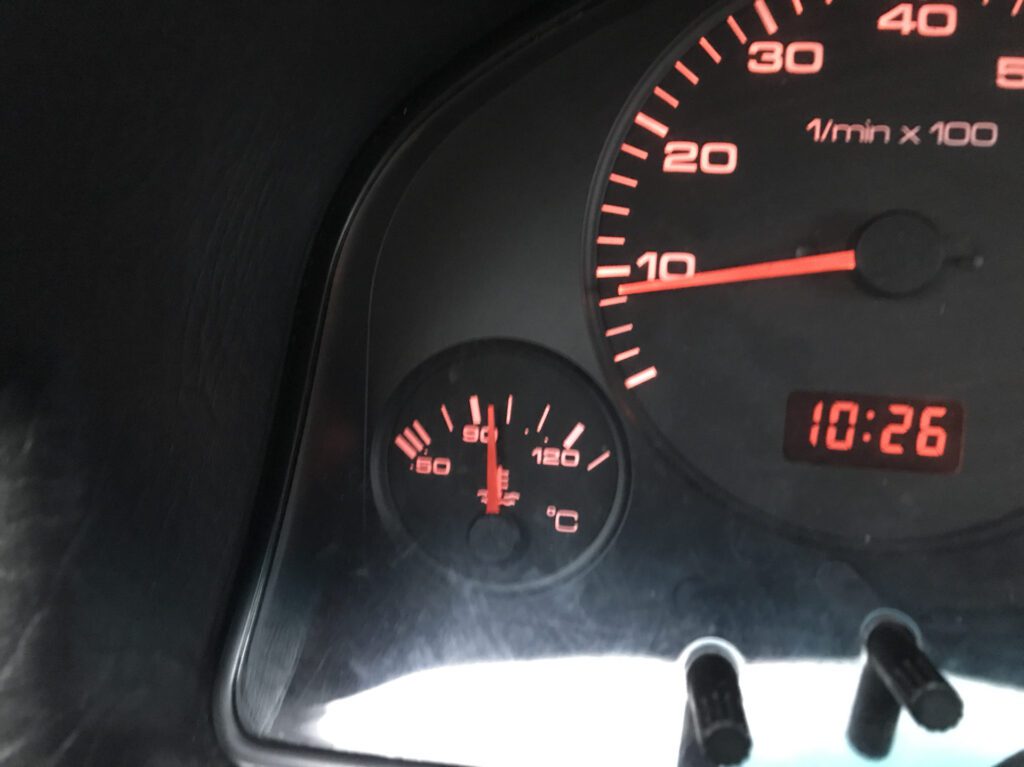
The fact is that the signaling device does not work with the approach of the critical temperature, but when the overheating has already taken place. If you take motors running on gasoline, then they can work properly at a temperature of 115-125 degrees, but in reality this parameter can be much higher, and the light will not light up.
Under such conditions, the standard cooling system will operate at maximum load, since the higher the temperature of the antifreeze, the more it expands, which increases the pressure in the system and the pipes may not withstand.
Normal overheating refers to a situation where the cooling system cannot optimize the coolant temperature to a normal value. At the same time, the engine has not yet reached the emergency temperature, so the light does not light up.
Sometimes local overheating occurs, which the driver also does not know about, since the emergency heating sensor of the internal combustion engine does not work. Despite the absence of an alarm, the motor can be seriously damaged. Moreover, in many such situations, even computer diagnostics may not show this problem, because the control unit does not register a single temperature sensor error.
This effect has been taken into account by powertrain manufacturers, and their design allows them to withstand such overheating. Allowable overheating is a temperature in the range from 120 to 130 degrees. Most power units are not designed for heavy loads at such temperatures, but when the engine is running in traffic jams, it is still acceptable.
But when the "standard overheating" parameter is reached, the motor cannot be loaded, for example, dashingly start on the vacated track after standing in a traffic jam. Although the radiator began to blow more intensively, it takes some time for the coolant to cool down to the desired 80-90 degrees.
What is the danger of high engine temperature
If the engine experiences regular overheating for a long time, detonation will begin to appear in the cylinders (not the combustion of the air-fuel mixture, but its explosion, and the energy can spread chaotically), the pistons may be damaged, and the coating of the cylinder liners may crumble in all-aluminum ICEs.
Often in these situations, the oil pressure is insufficient to cool the parts and lubricate them properly. As a result, the motor gets scuffed on the most loaded parts. Critical temperatures in pistons, piston rings and valves will result in oil sludge build-up.
The situation is aggravated by dirt on the fins of the cooling radiator heat exchanger, slipping of the pump belt, voltage sags, deterioration of heat transfer in the cylinder head, the use of an old fan that has long lost its effectiveness.
Worst of all have cars that often find themselves in traffic jams. The engine cooling system in such vehicles often operates at critical temperatures, so such power units do not last long even with low mileage. If the car is equipped with an automatic transmission, then the transmission in such a vehicle can also seriously suffer from excessively high temperatures.

When the motor reaches peak overheating, accompanied by a plentiful cloud of steam from under the hood, this can lead to motor wedge and other consequences. Of course, for the motor to die so “brightly”, the driver needs to try, but such a problem is often preceded by long-term operation under conditions of “regular overheating”.
You can prevent premature failure of the power unit from overheating by drowning it. But this is if the cooling system is equipped with an electric pump. Otherwise, the overheated motor will remain in this state for a long time until the antifreeze cools down in the water jacket of the motor, and this may take about an hour, depending on the ambient temperature.
The cooling system is the first to suffer when the internal combustion engine overheats. Due to excessive antifreeze pressure, the pipes may burst. In a more critical situation, scuffing, deformation of the cylinder head and the cylinder block itself, valve displacement and other fatal consequences of prolonged overheating of the engine will appear in the cylinders.
Causes of engine overheating
Overheating can be caused by many reasons, all of them are associated with a malfunction of the cooling system, or the quality of the coolant, as well as contamination of the cooling system jacket, which impairs the fluid's capacity. It is important to use quality spare parts, otherwise the following reasons will happen suddenly. Let's consider each of the reasons.
Low coolant level
The most common problem is the lack of coolant in the system. Coolant, in the form of antifreeze or antifreeze, constantly circulates through the system, removing heat from heated engine parts. If the coolant level is insufficient, the heat will not be removed enough, which means that a rise in temperature will be inevitable.
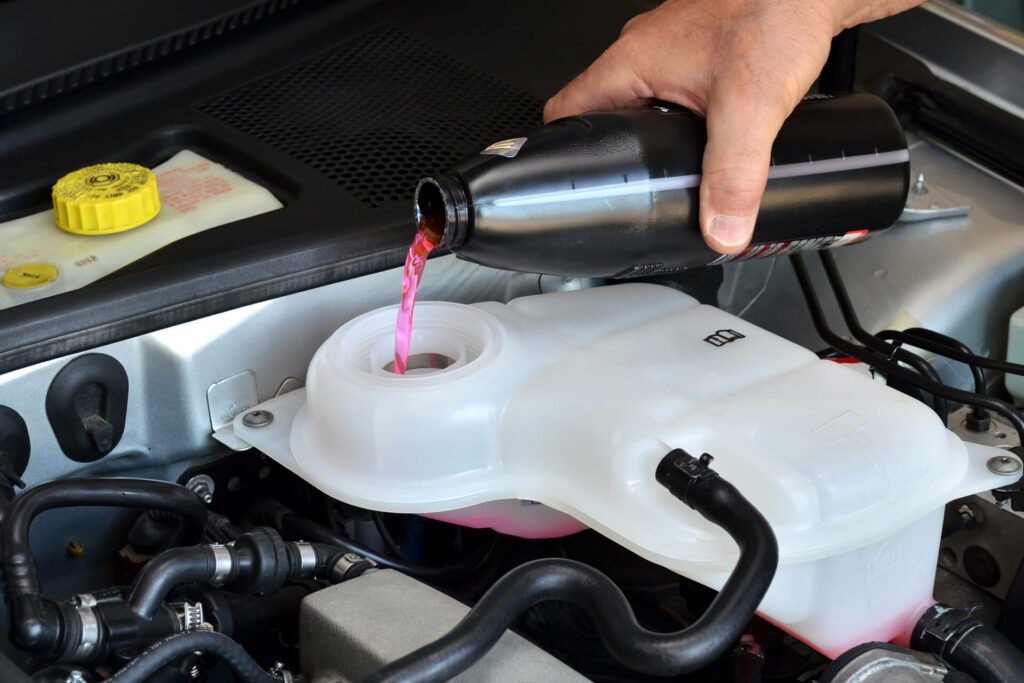

If it is not possible to add coolant, then turn on the stove to reduce the likelihood of overheating. In extreme cases, add regular or distilled water, after which the cooling system must be washed, then pour fresh antifreeze. At t ° above 90 degrees, you should immediately stop the car and turn off the ignition, allow the engine to cool.
Failed electric cooling fan
The electric fan pumps cold air onto the radiator, which is especially necessary when driving at low speed, when there is not enough air flow. The fan can be installed both in front and behind the radiator. If the temperature arrow starts to rise, stop the car and check the fan for proper operation. Causes of fan failure:
- motor failed
- oxidized connector
- fan relay burned out
- The engine temperature sensor has failed.
To check the fan, remove the connectors from it, and “throw” the wires directly to the battery, which will determine the cause of the failure.
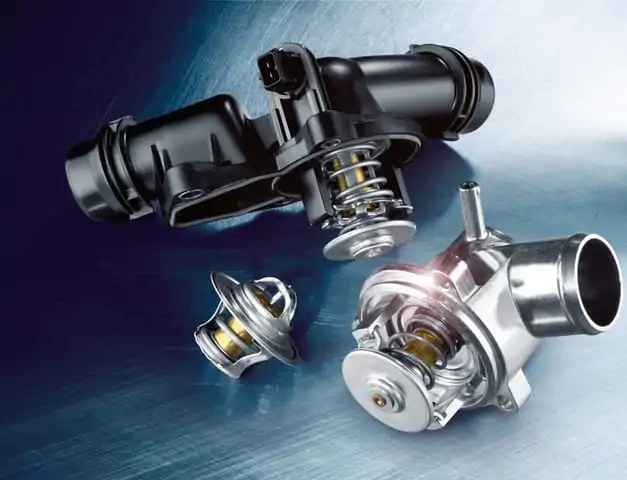

Thermostat malfunction
The thermostat is one of the main elements of the cooling system. There are two circuits in the cooling system: small and large. A small circuit means that the fluid circulates only through the engine. In a large circuit, fluid circulates throughout the system. The thermostat helps to quickly gain and maintain operating temperature. Thanks to the sensitive element, which opens the valve at 90 degrees, the liquid enters a large circle, and vice versa. The thermostat is considered faulty in two cases:
- working t ° of a cooling liquid is not reached
- the power unit tends to overheat.
The thermostat can be located directly in the cylinder block, in a separate housing, or as a unit with a temperature sensor and a pump.
Cooling fan belt break
For vehicles with a longitudinally mounted engine, the fan can be driven by a drive belt from the crankshaft pulley. In this case, the fan runs forcibly. Resource drive belt from 30 to 120 thousand km. Usually, several nodes are driven by a single belt. When the belt breaks, the internal combustion engine instantly tends to overheat, especially when the speed is reduced. If you have a domestic car with a belt fan drive, it is recommended to install an additional electric fan in order to avoid unpleasant cases.
Dirty radiator
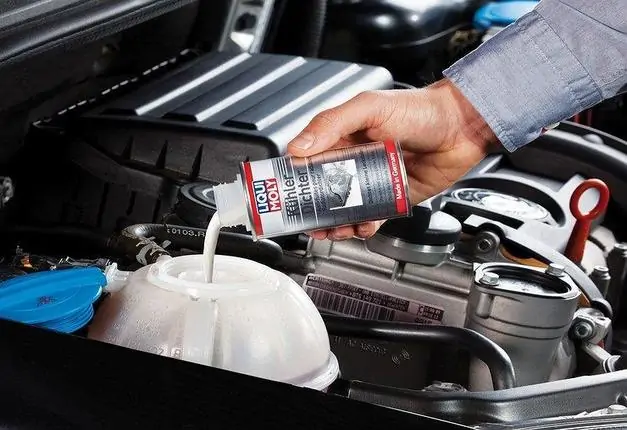

Once every 80-100 thousand kilometers it is required to flush the radiator along with the entire cooling system. The radiator is clogged for the following reasons:
- untimely replacement of antifreeze
- low-quality fluid
- water application
- the use of sealant for the cooling system.
To wash the radiator, you should use special compounds that are added to the old antifreeze, the motor runs on this “mixture” for 10-15 minutes, after which you need to remove water from the system. It is advisable to remove the radiator, rinse it with water under pressure inside and out.
Reasons for low engine temperature
Low engine temperature can be in the following cases:
- inappropriate thermostat (opening temperature too early)
- high performance cooling fans, or their forced operation from the moment the engine starts
- thermostat malfunction
- non-compliance with the proportion of mixing antifreeze with water.
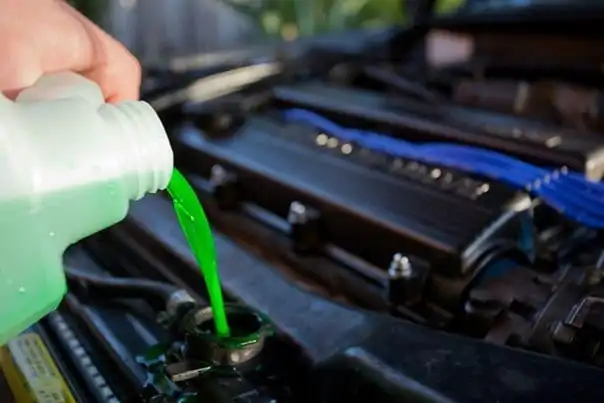

If you get antifreeze concentrate, then it must be diluted with distilled water. If in your region t ° decreased, up to a maximum of -30 °, then get antifreeze marked “-80” and dilute it 1: 1 with water. In this case, the resulting liquid will be heated and cooled in time, and also will not lose lubricating properties, which is extremely necessary for the pump.
The main types of ICE cooling systems
- Liquid cooling. In the system, the fluid circulates due to the pressure created by the pump (water) pump. The operating temperature is low due to the control of the thermostat, sensors and fan.
- Air cooling. We are familiar with such a system from the Zaporozhets car. In the hind wings “ears” are used, through which the air flow enters the engine compartment and maintains normal engine t °. In many motorcycles, the motors are also cooled by air, due to the use of fins on the cylinder head and pallets that remove heat.
Influence of the type of internal combustion engine on its operating temperature
The operating temperature indicator also depends on the type of cooling system with which the motor is equipped. Motors with a natural air cooling system are most susceptible to overheating. When vehicles move along the highway, the fins of the heat exchanger are adequately cooled. But as soon as the motorcycle stops in a traffic jam, the temperature of the heat exchanger jumps to 200 degrees and higher.
The lowest operating temperature is possessed by power units that are cooled by an open-type water system. The reason is that the heated water does not return to the closed circuit, but is removed to the water area. For further cooling of the power unit, cold water is already taken from the reservoir.


If we talk about cars, then models equipped with a diesel power unit receive an enlarged cooling radiator. The reason is that for such motors, the optimum temperature is 100 degrees and above. In order for the fuel to ignite in it, the air in the cylinders must be compressed with great force (increased compression compared to gasoline engines), so the internal combustion engine must warm up well.
If there is a gasoline carburetor engine in the car, then the optimum temperature for it is in the range from 85 to 97 degrees. Injection power units are designed for a higher temperature (95-114 degrees), and the pressure of antifreeze in the cooling system can rise to three atmospheres.
Optimum operating temperature for injection, carburetor and diesel engines
As we have already noted, the optimal temperature indicator for a power unit running on gasoline is within +90 degrees. And this does not depend on the type of fuel system. An injection, carburetor or turbocharged gasoline engine - they all have the same standard for the optimal temperature.
The only exception is diesel engines. In them, this indicator can vary between +80 and +90 degrees. If, during the operation of the engine (regardless of the mode), the arrow of the thermometer passes over the red mark, this either indicates that the cooling system cannot cope with the load (for example, old carburetor machines often boil in traffic jams), or some of its mechanism has come out of building.
Consequences of overheating and hypothermia of the internal combustion engine
Now let's talk a little about overheating and, as strange as it may sound, about hypothermia of the power unit. When the engine overheats, the temperature of the coolant rises. When this parameter goes beyond the boiling point, the antifreeze expands strongly due to the formed air bubbles.
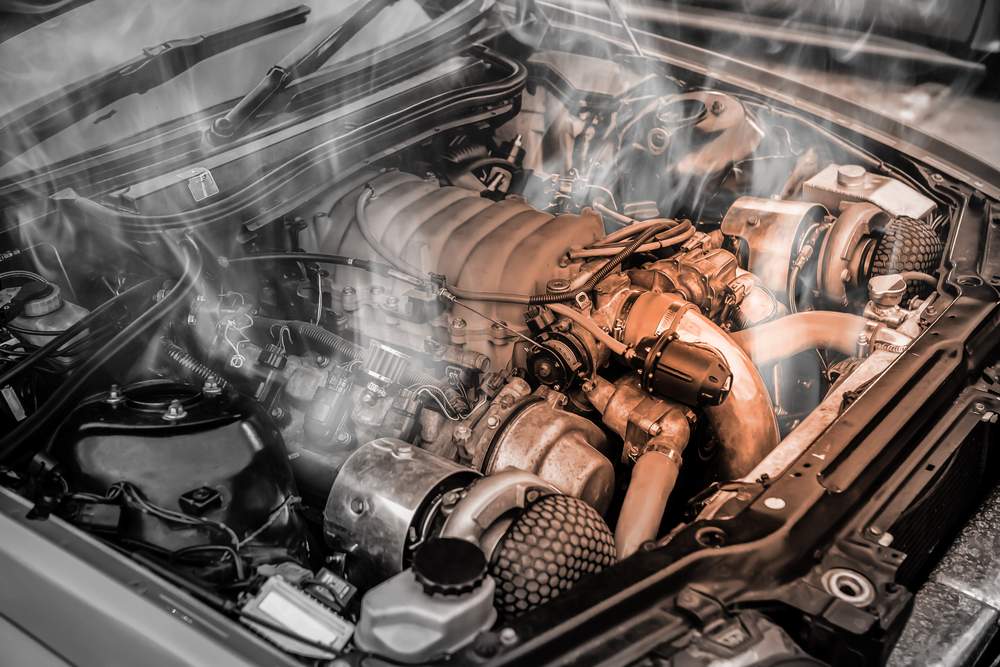

Due to a critical rise, the line may break. In the best case, the branch pipe will fly off, and the boiling antifreeze will flood the entire engine compartment. Such a breakdown promises the driver many problems, from contamination of the drive belts to a short circuit in the wiring.
In addition to the gust, the boiling of antifreeze creates air pockets, especially in the cooling jacket. This can cause the metal to deform. A wedge of the unit may occur when parts expand. Such a breakdown requires the most expensive repair work.
For most modern motors, the critical temperature is +130 degrees. But there are also such power units that can be safely operated, even when the antifreeze in them heats up to +120. Of course, if the coolant does not boil at that temperature.
Now a little about hypothermia. This effect is observed in the northern regions, where critically low temperatures are quite normal for the winter. Engine overcooling means that the antifreeze cools down too quickly, even if the engine is running under high load conditions. The engine is overcooled mainly while driving. At this moment, ice cold air in large quantities enters the radiator heat exchanger, and lowers the temperature of the coolant so much that the engine does not reach operating temperature.
If the carbureted internal combustion engine is overcooled, the fuel system may suffer. For example, an ice crystal may form in the fuel jet and block the hole and stop gasoline from flowing into the chamber. But more often the air jet freezes. Since air stops flowing into the engine, the fuel does not ignite. This causes the candles to flood. As a result, the car stalls and cannot be started until the spark plugs are dry. This difficulty is solved by installing a corrugated pipe, which provides fresh air intake in the area of the exhaust manifold.
In severe frosts, antifreeze does not freeze, in fact, this is why the liquid is called antifreeze, and each type of coolant has its own freezing threshold. But if the driver thinks that the engine will heat up the cooling system anyway, and uses water instead of antifreeze, then he risks ruining the radiator, since in severe frost it is enough for the car to stand a little with the engine turned off, and the system will begin to freeze.
But the formation of water crystals in severe frost occurs even while the car is moving. If the radiator becomes clogged, even if the thermostat is open, the coolant will not circulate and the water will freeze even more.
Another consequence of the overcooling of the power unit is the inability to properly use the heating system of the vehicle interior. The air from the deflectors will come either cold, as if the car had just been started, or barely warm. This will negatively affect ride comfort.
How to restore the normal temperature of the internal combustion engine
If the arrow of the motor temperature quickly crawled upwards, it is necessary to determine what caused this. For example, due to a low level of antifreeze in the cooling system, it may not circulate, which is why the motor will start to heat up quickly.
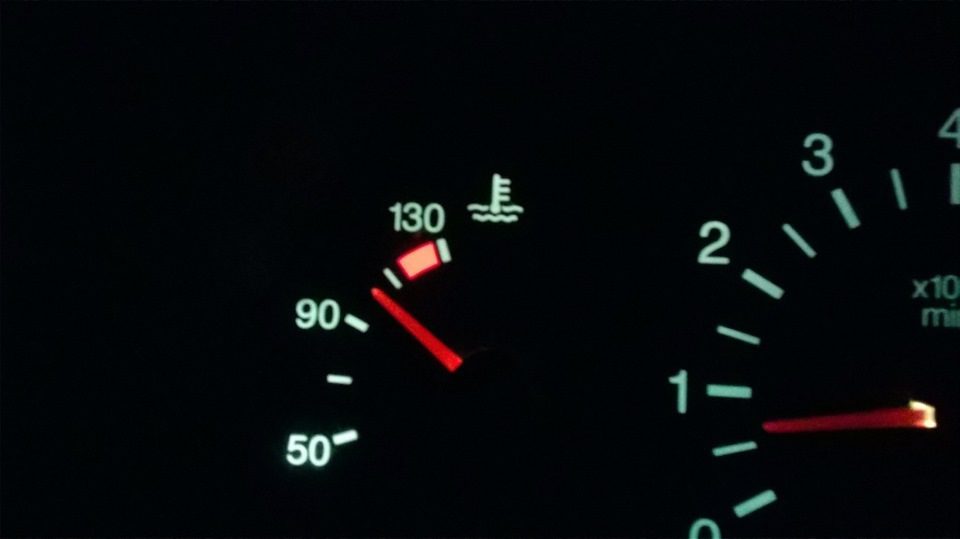

In this case, you should find out where the antifreeze went if there was enough of it in the tank before the trip. For example, it could have flowed out due to a ruptured pipe. Worse if the antifreeze went to the crankcase. In this case, thick white smoke (not like water vapor) will come out abundantly from the exhaust pipe.
Also, antifreeze leakage can occur due to a failed pump or a broken radiator. In addition to checking the coolant level, you need to make sure that the fan near the radiator is working properly. In a traffic jam at an elevated temperature, it may not turn on, which will certainly lead to overheating of the internal combustion engine.
At what engine temperature should you start driving
If it is winter outside, then for high-quality pumping of oil through the channels of the motor, the power unit must warm up to the mark of 80-90 degrees. If it is summer outside, then you can start moving when the engine warms up to 70-80 degrees. The oil at positive temperatures is thin enough to properly pump to all parts of the internal combustion engine.
It is necessary to wait until the engine reaches operating temperature before driving so that its parts do not suffer from dry friction during loading. But such warming up is necessary after a long period of inactivity, for example, in the morning. On subsequent starts of the engine, this procedure is not required, since the oil has not yet had time to completely drain into the sump.
If the engine does not warm up to operating temperature
There are several reasons for this problem:
- In winter, when the engine is warming up, the driver immediately turns on the stove;
- Severe frost;
- Incorrect operation of the thermostat or it is stuck in the open position (coolant immediately circulates in a large circle);
- Failure of temperature sensors.


If the engine warms up slowly, and it is too early to start intensive driving, especially at high speeds and uphill, then the engine will not receive enough lubrication (oil starvation). Because of this, its parts will quickly become unusable. Since its efficiency depends on the temperature of the internal combustion engine, a cold power unit will be less responsive.
In order for the engine to warm up faster in the cold, you should not turn on the stove immediately - it will still be useless until the internal combustion engine warms up. A stuck thermostat must be replaced, and if it is severe frost outside, then strong cooling of the antifreeze can be prevented. To do this, you can install blinds on a part of the radiator so that it is only partially blown out during driving.
What rules should be followed
In order for the engine not to go beyond the permissible temperature parameters, each driver must observe the following rules:
- Constantly monitor the quantity and quality of the coolant in the system;
- Until the engine reaches operating temperature, do not subject it to stress, for example, transporting loads or driving fast;
- You can start moving when the arrow of the internal combustion engine thermometer reaches +50 degrees, but in winter, when frost begins, it is necessary to wait until the operating temperature is reached, since cooling will be intensified during the movement;
- If the temperature of the power unit goes beyond the norm, it is necessary to check the condition of the cooling system (whether the radiator is clogged, whether the antifreeze is old, whether the thermostat or fan is working properly);
- After a serious overheating of the motor, it is imperative to diagnose it in order to prevent serious malfunctions;
- To prevent the engine from overcooling in winter, it is necessary to prevent free access of the air flow directly to the radiator heat exchanger. To do this, you can install a cardboard partition between the radiator and the radiator grille. But this is only required if the motor is overcooled, that is, during the movement, its temperature drops below the required parameter;
- In northern latitudes, for easier starting of the internal combustion engine, you can use a liquid preheater (about what it is, read in another article);
- Do not fill the cooling system with water. In summer, it will boil faster, and in winter it can tear the radiator or, worst of all, the cooling jacket.
Here is a short video on the theory of powertrain overheating:


Watch this video on YouTube
Normal engine temperature in winter
Before you start driving in winter after a long period of inactivity, you must let the engine run at high speeds for no longer than 7 minutes, and at low speeds for no longer than 5 minutes. After that, you can start moving. With a working cooling system, the engine will have time to reach operating temperature during this time.
In winter, during frosts, the operating temperature of the internal combustion engine is about 80-90 degrees. In order for the engine to adequately reach this indicator, there must be a suitable antifreeze or antifreeze in the cooling system, but in no case water. The reason is that water freezes at -3 degrees. During crystallization, the ice will surely break the water jacket of the motor, because of which the power unit will have to be changed.
Warming up the internal combustion engine
The engine warm-up time depends on the ambient temperature. This procedure is not particularly difficult. To do this, you need to start the engine. If the car is carbureted, then before starting, you need to remove the suction, and after starting the internal combustion engine, wait for the speed to stabilize, helping it not to stall with the help of a gas filling.
With an injection motor, everything is much easier. The driver simply starts the engine, and the control unit independently adjusts the speed to the temperature of the unit. If the car is covered with snow, then the engine warm-up time can be used to clean it. It takes 5 to 7 minutes for the motor to reach operating temperature.
In regions with harsh winters, the engine is also warmed up using pre-heaters. Depending on the model of this equipment, it is possible not only to heat the oil in the engine, but also to use hot coolant to heat the passenger compartment.
Engine insulation
The need for motor insulation arises when the machine is operated in severe frost conditions. The colder the unit is, the more difficult it will be to start.
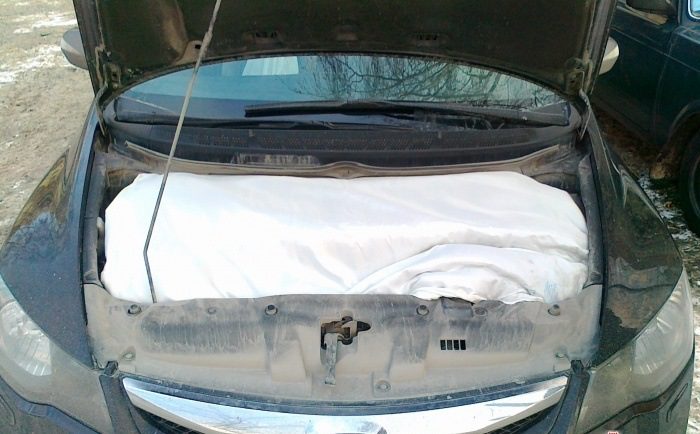

To speed up the warm-up time of the internal combustion engine, the car owner can use:
- Automotive blanket for motors. This is a small blanket made of fireproof material. You don't even need to put it away during the trip. The peculiarity of this insulation is in its low thermal conductivity, due to which, after stopping the transport, the motor does not cool down so quickly.
- Electric heater. This is a small heating element that is installed instead of the dipstick in the engine. It is used to heat all the oil in the sump. After starting the engine, such a lubricant is quickly pumped through the channels of the internal combustion engine, so that you do not need to burn fuel for a long time so that the load does not damage the engine parts. The disadvantage of such a heater is that the car must be located near a 220 volt network so that the device can be connected.
- Starting independent heater. To date, this is the most advanced tool for preparing a vehicle for a trip in a harsh winter. There are models of heaters that heat only the engine, and there are modifications that can even heat the interior of the car. Read more about these devices in another review... The advantage of such equipment is that it effectively heats up the engine without starting it. The disadvantages include the need for constant recharging of the battery, especially if a cabin heater is used.
Freezing of the engine
There are two situations in which the motor can freeze. Firstly, motorists with a negligent attitude to the vehicle face such an effect. Such drivers do not consider it necessary to use special substances as a coolant.
They are confident that distilled water is sufficient to cool the motor. If in summer this is not critical except for scale, then in winter the crystallization of water in the engine or radiator will necessarily lead to a rupture of the circuit.
Secondly, drivers who operate their vehicle in northern latitudes during severe frosts are faced with freezing of the engine. This mostly happens while driving. Although the engine is running, and the air-fuel mixture is burning in it, due to excessive cooling of the radiator, the antifreeze in the system is too cold.
This causes the motor temperature to drop below operating temperature. To eliminate hypothermia, the machine is equipped with a thermostat, which closes when the antifreeze temperature drops, and the coolant begins to circulate in a small circle.
Due to overcooling of the engine, the fuel system may fail (for example, the diesel fuel will not have time to heat up and turn into a gel, because of which the pump will not be able to pump it, and the engine will stall). Also, an excessively cold engine will not make it possible to use the stove - cold air will enter the cabin, since the heater radiator is also cold.
Related videos
As you can see, not only the performance and efficiency of the power unit depends on the operating temperature of the engine, but also the correct operation of other vehicle systems.
Here's a short video on what to do if your car's engine overheats:


Watch this video on YouTube
Engine temperature - Questions and answers:
Why is the engine not picking up operating temperature? The very first factor affecting the warm-up time of the motor is the ambient temperature. The second is the type of engine. A gasoline power unit heats up faster than a diesel power unit. The third factor is a failed thermostat. If it remains closed, the coolant will move in a small circle and the engine will quickly overheat. If the thermostat is stuck open, then the coolant will circulate in the process of warming up the engine immediately in a large circle. In the second case, the motor will take too long to reach operating temperature. Because of this, the unit will consume more fuel, the piston rings will be damaged, and the catalyst will clog up faster.
What is the minimum vehicle operating temperature? Engineers recommend always preparing the power unit for the upcoming trip. In the case of an injector, before starting to move, you must wait until the electronics reduce the speed of the unit to an indicator within 900 rpm. You can drive the car when the temperature of the antifreeze reaches +50 degrees. But you cannot load the engine (dynamic driving or transportation of large cargo, including full loading of the cabin by passengers) until it heats up to +90 degrees.
What engine temperature is too high?
When it comes to new and used cars, your car, without exception, should operate between 190 and 220 degrees. This can be affected by factors such as air conditioning, towing and idling, but it shouldn't matter. Depending on how much coolant is in excess of this limit, you are at increased risk of fire.
Is 230 degrees Fahrenheit too much for an engine?
They can reach speeds from 195 to 220 degrees Fahrenheit.
The thermostat must be adjusted according to the temperature in it.
Some parts of your car's gauge do not measure accurately.
The temperature must be at least 230 degrees Fahrenheit.
What temperature is considered overheating in a car?
The engine reaches 231 degrees Fahrenheit when it is not cool enough.
If the temperature is above 245 degrees Fahrenheit, it may cause damage.
What temperature is considered overheating in a car in Celsius?
In most modern Japanese OBDII vehicles since 1996, the maximum level at which your cooling system should stabilize is 76-84 degrees Celsius.
Your engine runs best when it's in this window.
What to do if the temperature in the car is high?
As soon as you turn on the heater at full power, some of the engine heat can be removed in time.
The engine must be replaced after you have stopped.
Close it right now and there.
The hood must be up.
Make sure the engine is cool so it runs at a comfortable temperature...
You should also check the coolant tank.
Can I drive with a high engine temperature?
When your car overheats, it can cause severe and sometimes permanent engine damage, so try to stop it as quickly as possible.
How to reduce car engine temperature?
Make sure your car is in the shade...
It is best to hang curtains on the windows in the car.
Make sure your windows are tinted.
Make sure your car windows are slightly open.
Turn on floor vents, then turn them off.
When your conditioner is at its peak, use it sparingly.
You should carefully monitor the temperature of the car.
The cooling effect can be obtained by turning on the heating.
What causes high engine temperature?
Overheating can be caused by several factors such as leaking cooling pipes or pipes clogged with rust or corrosion, damaged condenser fluid, or broken radiators.
You may be able to avoid future overheating problems by checking regularly.
Is 220 degrees Fahrenheit too much for an engine?
The model for your engine temperature indicates a range of 195 to 220 degrees for standard temperatures. In ideal situations, the needle will maintain an exact position right in the middle of the scale.
240 degrees Fahrenheit - er too much for the engine?
The coolant in the engine overheats at a temperature of 240 to 250 degrees.
The result of this is that overheating occurs.
You may also find a few different things as you walk along the dashboard, including a red temp gauge or the words "engine hot" on the dash, which tell you not only that the engine light is on, but also when the car works well.
What is the engine overheating temperature?
The engine can heat up to over 230 degrees Fahrenheit.
It can damage your car if it reaches at least 245 degrees Fahrenheit.
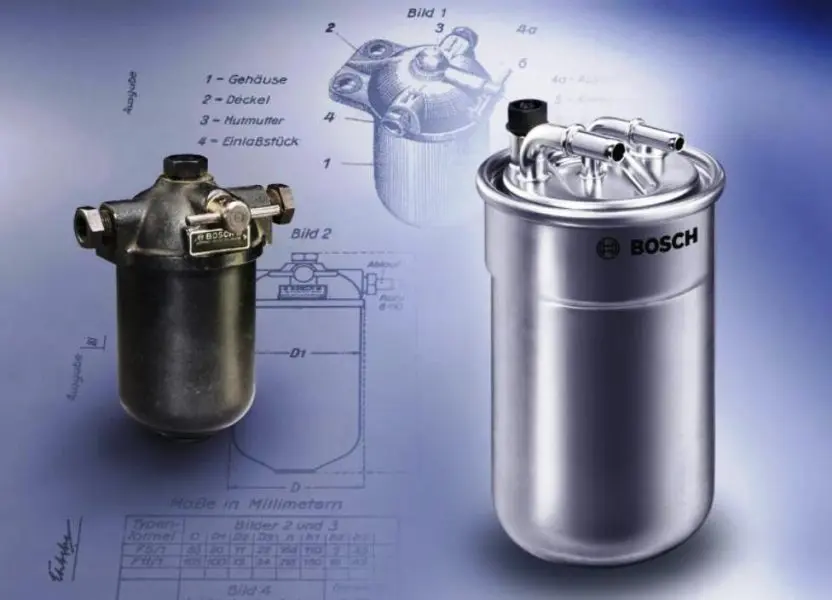
4 comment
Mihalache Silviu
Good evening,
with complete respect and confidence to reread my case.
I have a skoda octavia facelift vrs 2.0TDI, 170hp, CEGA motion code from 2011.
For several months, more precisely since March 2020, I have a problem that I can't find a solution to.
The car starts and runs flawlessly, but at some point the water sign lights up FOR A FRACTION OF A SECOND and the message CHECK COOLANT MANUALS appears for a second.
I changed the vessel from the new antifreeze from skoda, I changed the two temperature sensors G62 and G 83, I changed the distribution, I changed the oil and the antifreeze 3-4 times in 1000km.
It doesn't matter that the antifreeze temperature is 90 times 50, it does this especially when I go more sporty.
I diagnosed the car at skoda, nothing error 0 appears, I diagnosed while driving and found that the temperature is normal but exactly when it makes that signal the temperature rises for a second to 120 and returns immediately to 117 and returns immediate.
in the filming it is seen that the needle on board from the water moves tries to get up but because it is short-lived this returns to 90.
If you've ever encountered something like this, I need help.
With great respect.
Julian G
Yes, I suffer this with a Peugeot 207…
Vlad
Interestingly
Yaroslav
Hello, I have a car Daihatsu Delta White with a Toyota 1C engine, my problem is that the engine heats up to 120 in the heat when in the yard +30 and when in the yard in the evening or morning the temperature does not exceed 85 degrees, the thermostat has no water pump (pump ) works properly